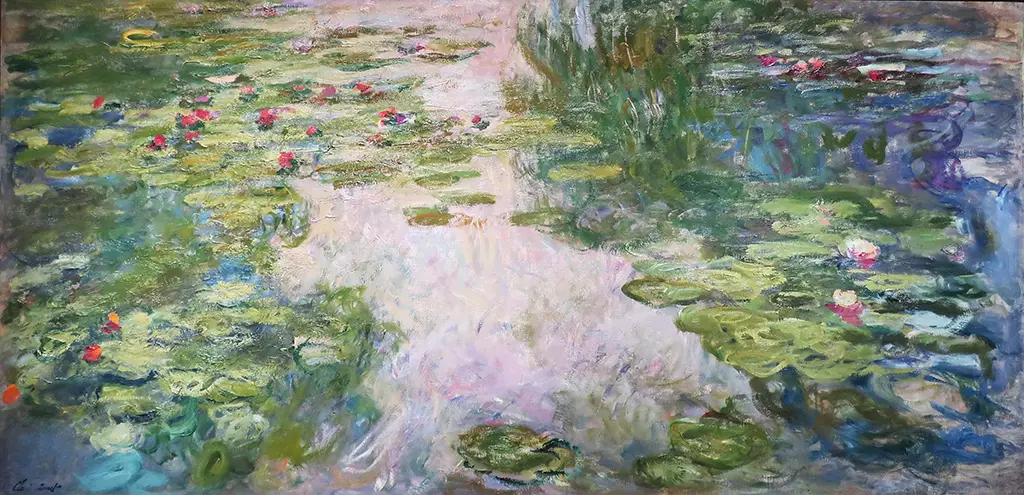The artist would produce so many different versions along this same theme that he would start to add dates to the title so that they could easily be differentiated. The example found here is loosely placed at around 1917-1919, by which time the artist had been working in this garden for several decades. He worked tirelessly over short periods of time to produce many iterations of work, before then being distracted by other genres. He returned to his garden for inspiration many times, and in total produced many hundreds of paintings and drawings of different parts of this stunning backdrop. Even today, thousands will flock to visit this garden themselves, excited to see the location that was to prove so fruitful for Monet's career. At a time when nature is becoming more of a consideration within all our lives, these pockets of heaven are essential to our well being, mentally and also physically for those who maintain them.
The composition that we find here focuses on a large array of his Nymphéas within the pond that he created over several years. Monet does not show us any more context that what we have here, so we cannot find the edges of the pond, or even see elements of the background of the garden. This careful cropping leaves almost an abstract array of colour, but the beauty delivered ensures we have little interest in what lies outside the scope of this painting. He would have come across aggressive methods of cropping compositions whilst studying Japanese art, but this example is really just a natural progression of his work in Giverny, where he made use of pretty much every last inch of his garden by varying his work over many decades. He had produced the more traditional scenes with bridge sat over the pond, as well as much more detailed, zoomed in studies of individual clumps of pods, leaving this piece somewhere in between.
Nymphéas 1917-1919 illustrates how Monet had worked for many years on this theme and had now achieved a form of perfection, with both light and colour. We find a good array of tones, from greens to blues, purples to pinks, and an abundance of light which strikes through the centre of the scene. There are several bushes which provide some vertical perspective, but mostly the painting is flat. The nymphéas themselves are predominantly in a bright purple tone, which helps them to stand out against the green pods, particularly as many at the back are fairly small. There is a beauty and calmness found within this painting that will be amongst the favourite of many, even amidst such a large array of work that Monet completed in and around his Nymphéas pond. Perhaps one can also see here what can happen when a gardener and a skilled artist combine - namely brilliance and beauty, entirely based around the natural world.



